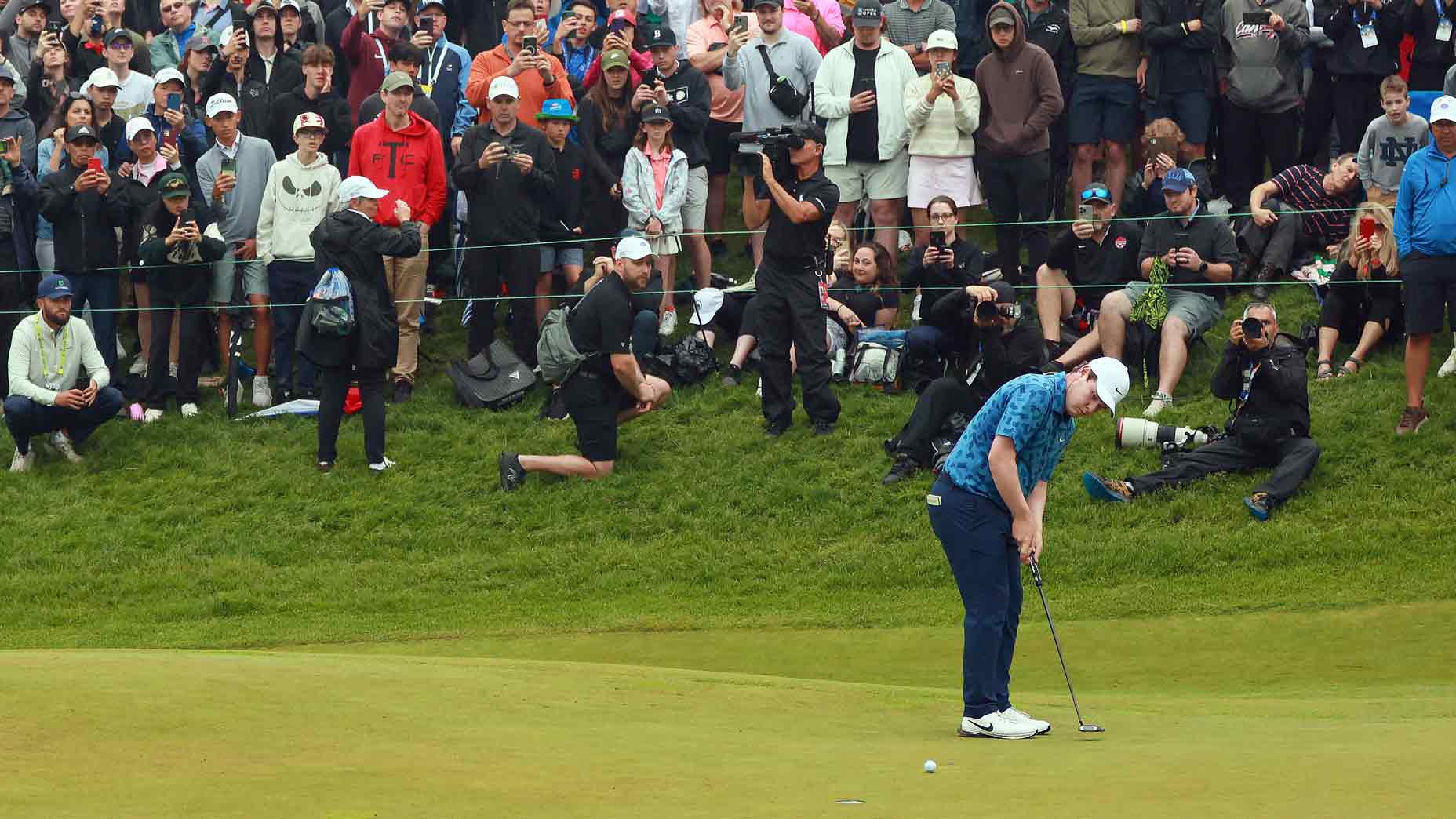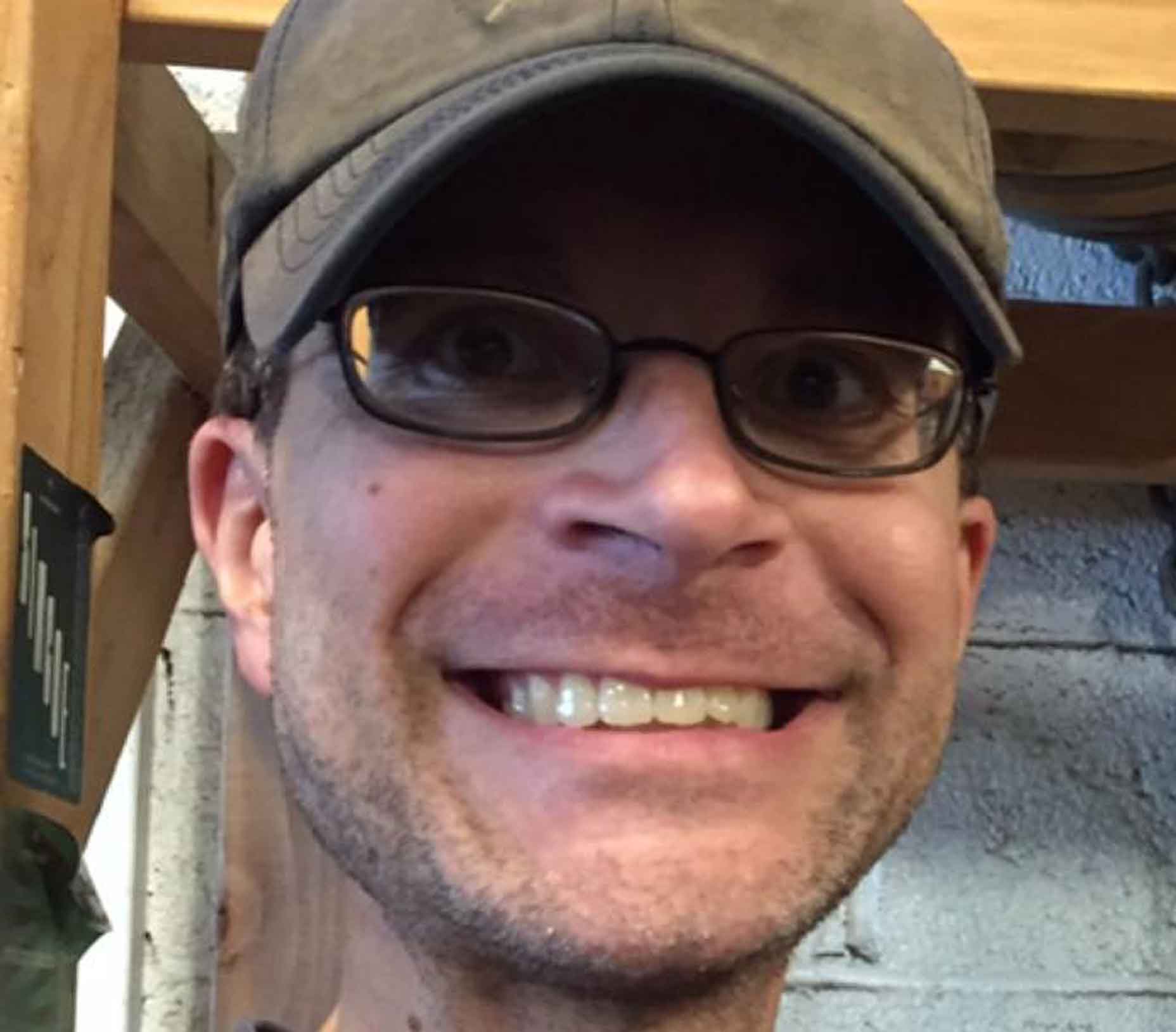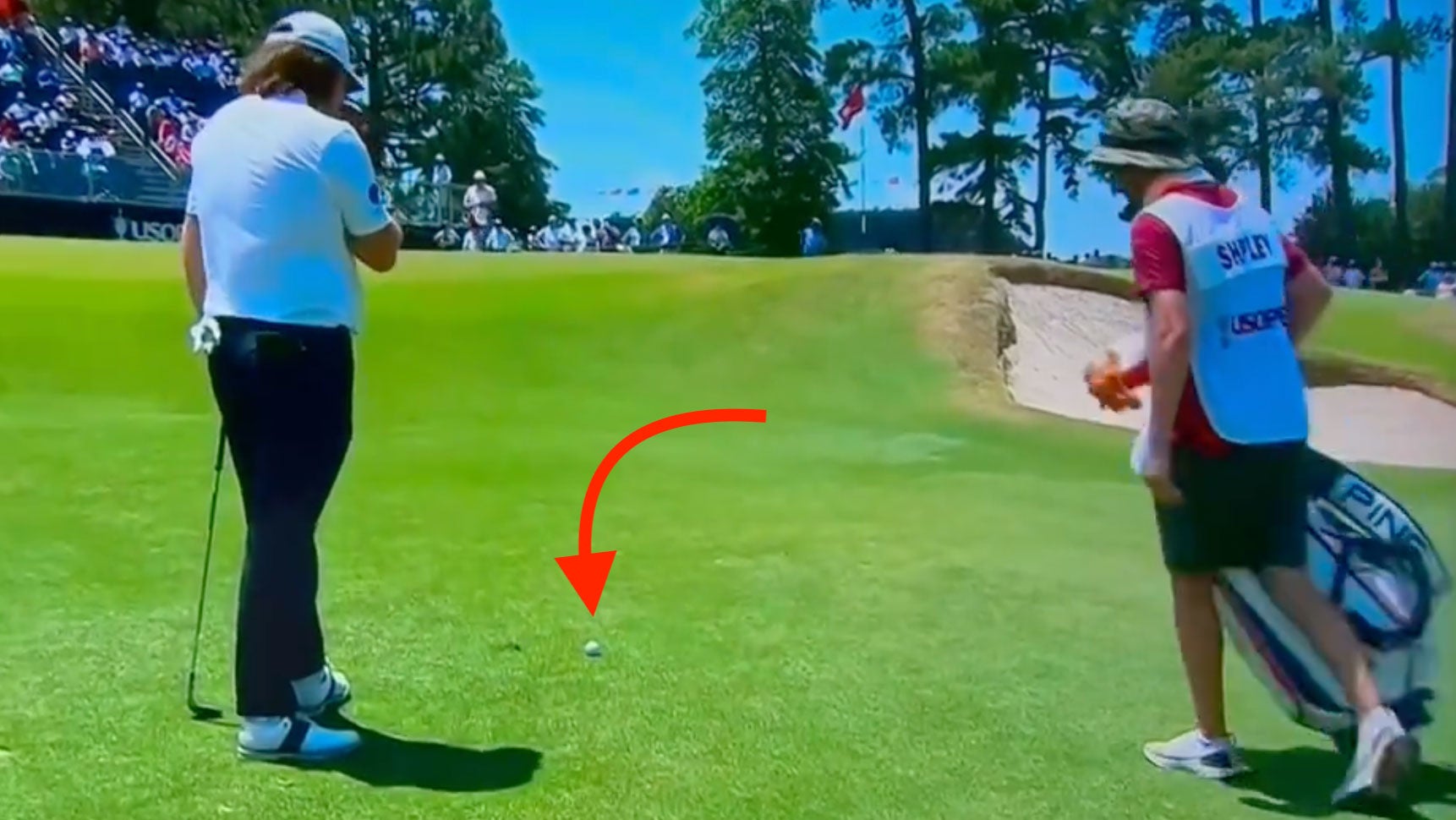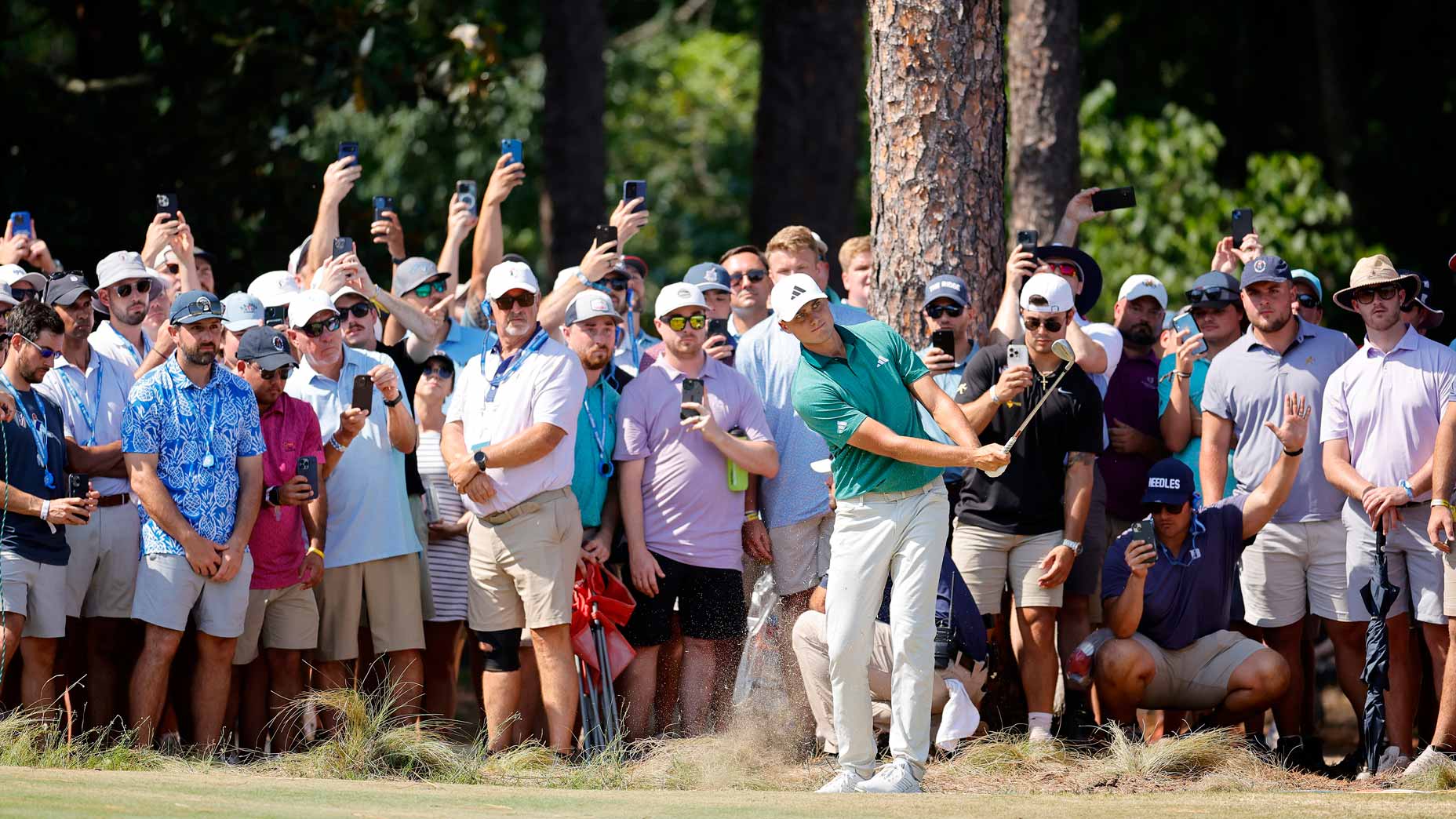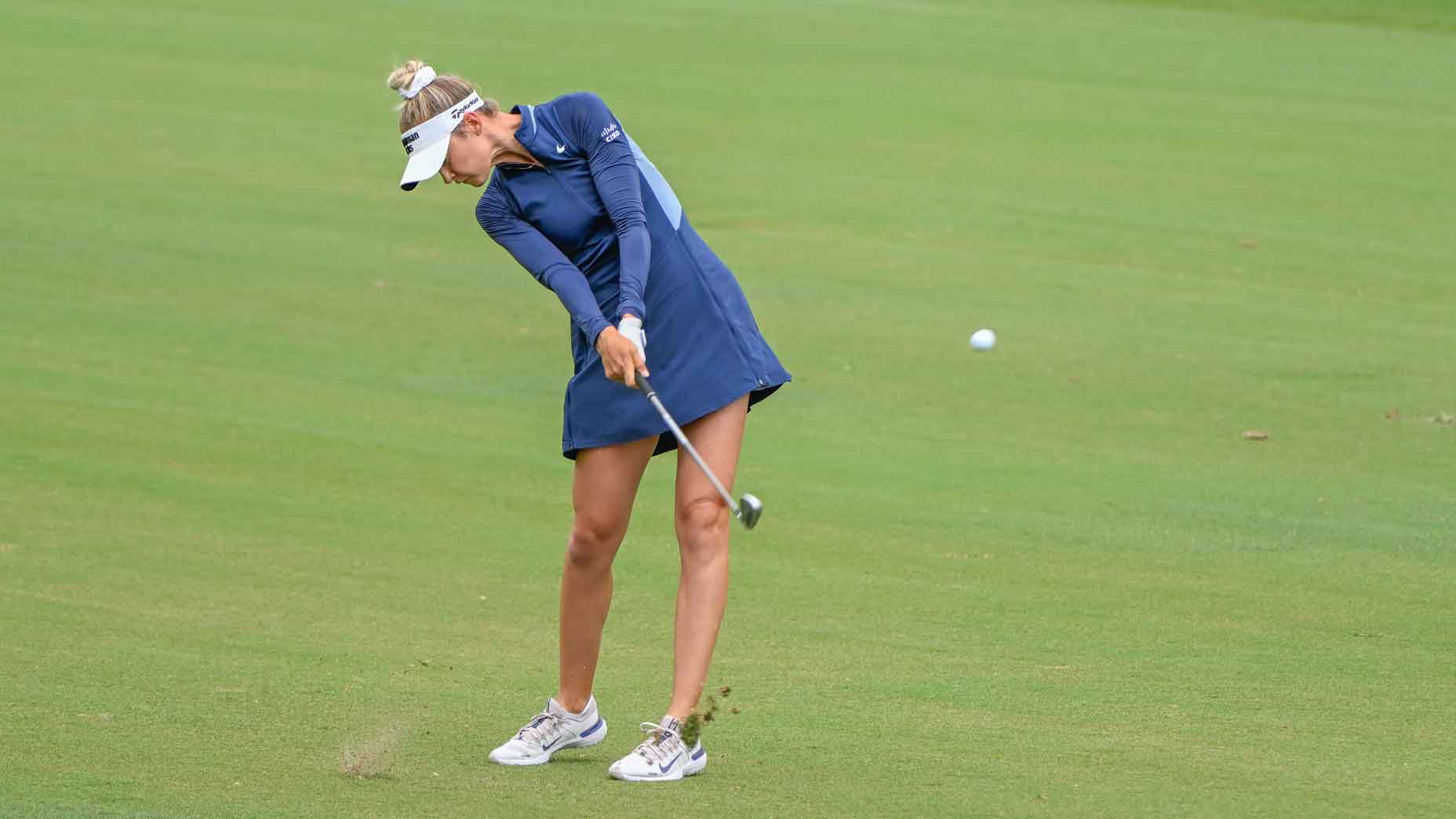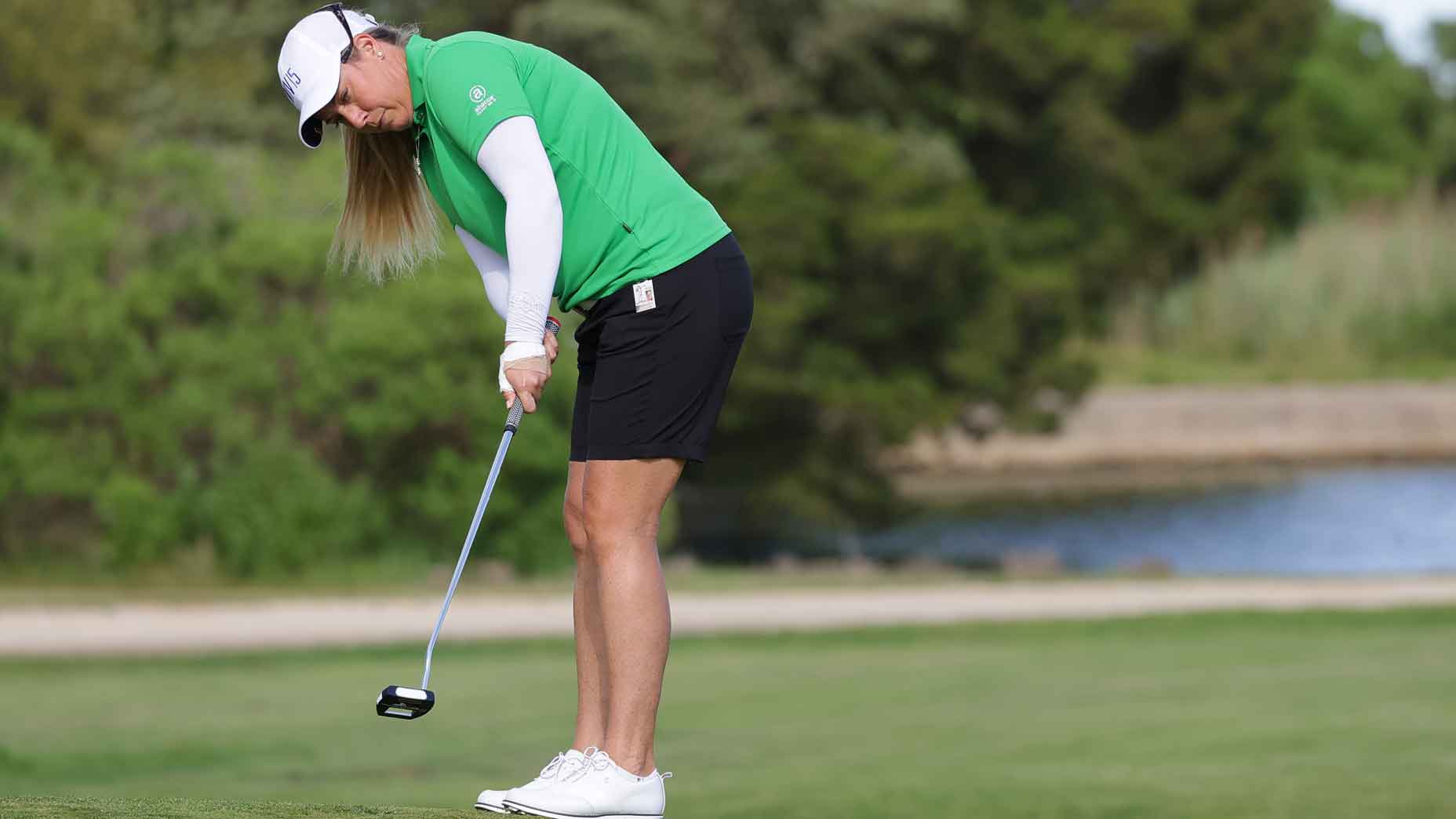Rules officials boot LPGA star from event, one day after a miracle find

Nasa Hataoka on Friday on the 9th hole at Seaview Golf Club.
Golf Channel
Nasa Hataoka’s ball was lost.
Then it was found.
Then, a day later, Hataoka was gone.
The sequence on Friday at the ShopRite LPGA Classic also raised questions of video reviews, and whether Hataoka could have been warned during play. In the end, though, the world’s 19th-ranked player was disqualified when it was determined after her first round that she had taken too long to search for her ball on her final hole at Seaview Golf Club, then subsequently played from the wrong spot.
The incident in question had come after Hataoka hit her second shot on the 477-yard, par-5 9th into tall fescue grass right of the green, starting a search. On Golf Channel’s broadcast, it appeared that about 15 people looked for the ball, including on-course announcer Tom Abbott, and eventually it was miraculously spotted; after her round, Hataoka said a cameraman found it.
But had the hunt taken too long? According to Rule 18.2, a player is allowed 3 minutes to find a ball, and on the broadcast, Abbott pointed out the search might have surpassed that.
Notably, the broadcast showed one minute, 37 seconds of it.
“The three minutes is the big issue here, I think, guys,” Abbott said on the broadcast. “We obviously didn’t have a timer, so it’s tough to tell exactly, but there is concern.”
At this point on the broadcast, rules official Ryan Palmer had come over after being called for, and Abbott said this: “There doesn’t seem to be any chat about the time it took to find the ball. I think she just wants to take an unplayable.” From there, Hataoka did, pitched on with her fourth shot and rolled in her fifth for a par and a round of six-under 65, which at the time placed her in a tie for third.
But early Saturday afternoon, the LPGA announced Hataoka was disqualified. Below is the complete statement:
“During the first round of the LPGA Shoprite Classic, Nasa Hataoka played her second shot on No. 9 into the long fescue surrounding the green, her last hole of the day. After reviewing video footage provided to the LPGA following the round, it was determined that the search for Nasa’s ball lasted longer than the three minutes allowed under Rule 18.2a. After three minutes of search, the ball is considered lost, and the player must proceed under stroke and distance (Rule 18.2b).
“Hataoka’s ball was eventually found after the search time expired. The Rules require the player whose ball is lost to proceed under stroke and distance (Rule 18.2b). When Hataoka did not play from where she had previously played from, she played from the wrong place (Rule 14.7). Because where she played from could give the player a significant advantage compared to the stroke to be made from the right place, this is considered a serious breach of Rule 14.7 with a penalty of disqualification if not corrected in time. The player had until she left the scoring area to correct this mistake per Rule 14.7.”
There are some questions.
What’s the rule for video reviews? Hadn’t it been changed? It had, though it appears the rule did not protect Hataoka. The USGA’s website explained it this way:
“New Decision 34-3/10 implements two standards for Rules committees to limit the use of video: 1) when video reveals evidence that could not reasonably be seen with the “naked eye,” and 2) when players use their “reasonable judgment” to determine a specific location when applying the Rules.
“The first standard states, “the use of video technology can make it possible to identify things that could not be seen with the naked eye.” An example includes a player who unknowingly touches a few grains of sand in taking a backswing with a club in a bunker when making a stroke.
“If the committee concludes that such facts could not reasonably have been seen with the naked eye and the player was not otherwise aware of the potential breach, the player will be deemed not to have breached the Rules, even when video technology shows otherwise. This is an extension of the provision on ball-at-rest-moved cases, which was introduced in 2014.
“The second standard applies when a player determines a spot, point, position, line, area, distance or other location in applying the Rules, and recognizes that a player should not be held to the degree of precision that can sometimes be provided by video technology. Examples include determining the nearest point of relief or replacing a lifted ball.
“So long as the player does what can reasonably be expected under the circumstances to make an accurate determination, the player’s reasonable judgment will be accepted, even if later shown to be inaccurate by the use of video evidence.”
Couldn’t Palmer, the rules official, have stepped in? Perhaps. On the broadcast’s showing of the search, it appeared he wasn’t in the area, and helped only with the drop. It was also unclear what video footage rules officials looked at.
As of Saturday afternoon, Hataoka had not posted any statement to her social-media accounts.

